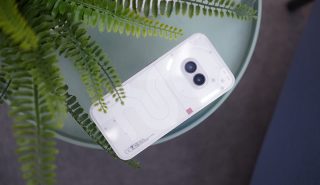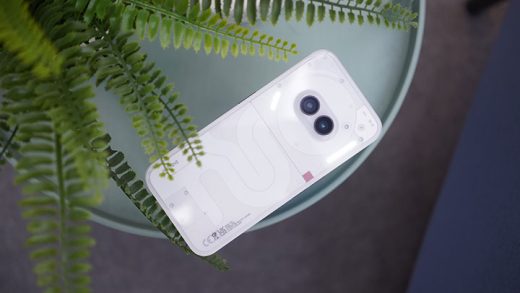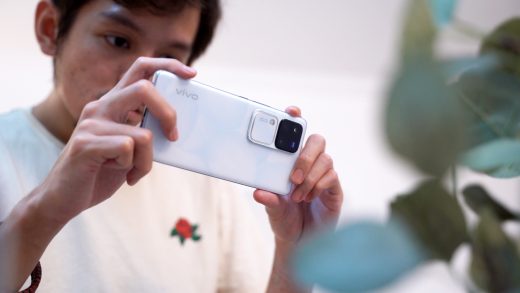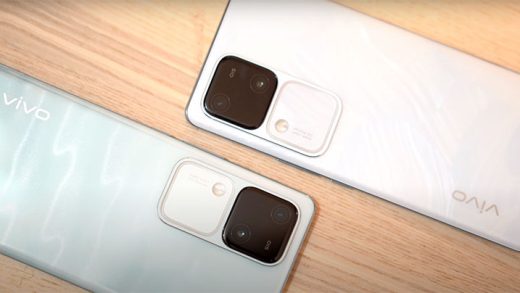Along with the EOS M6 and T7i/800D, the 77D was introduced by Canon earlier this year. Like the 800D, it’s packed with a 24.2 Megapixel CMOS Sensor and the new DIGIC 7 image processor.
For the body alone, this DSLR will set you back a little under Php50k.
Table of Contents
Design and Construction
Nothing new here with the look and form factor, the 77D still stays true to the Canon DSLR design language. Though somewhat light at only 493 grams (body only), it doesn’t feel like a toy in hand, thanks to its aluminum alloy chassis and fiberglass-resin finish. Textured rubber grips are present on either side for better handling and added protection.

All of the panels are rock solid together, and unlike a cheaper DSLR, there are no creaking noises made when holding the 77D tightly. For those that like to shoot in inclement weather or take a camera on nature trips, note that like the 800D, it does not support weather sealing.

The 77D has a fair amount of buttons and dials for changing shooting modes and adjusting exposure and other settings. There is also an LCD screen up top that shows you some exposure settings, the number of shots left, and battery life. Beside that are a built-in flash and hot shoe mount. The power switch also incorporates the video mode, whereas it is usually found on the main top dial with all the other shooting modes, which is very strange.

At the back, we have an optical viewfinder with ~95% coverage, as well as a 3.0-inch touch display that folds out and tilts to different angles for easier shooting in certain situations.


The right side has a door that covers the SD card slot, while the left side has mini USB, mini HDMI, microphone, and remote trigger ports. There is no headphone jack, which would have been handy for monitoring audio levels while recording videos.

At the bottom, you will find a standard 1/4″-20 thread, as well the compartment that houses the LP-E17 battery.

Our review unit came with a newly introduced 18-55mm f/4-5.6 IS STM kit lens. It is smaller than any previous Canon 18-55mm lens but has a slightly smaller aperture. You can also get the 77D with the 18-150mm IS USM lens, but expect to pay more.

At 131 x 99.9 x 76.2mm, it has the exact same dimensions as the entry-level 800D, and as shown in the image above, is slightly more compact than a 70D.
Display
The camera sports a 3.0-inch touch display that can fold out and rotate up to 270 degrees.

Being touch sensitive, it allows for easier previews, swiping through your shots, as well as double tap/pinch to zoom in to check certain details. It also allows you to change exposure settings like the shutter, aperture, ISO, and white balance, as well as touching areas that you want to be in focus, much like what you would see on a smartphone.
Performance
Like the 800D, the 77D has a fast and accurate autofocus. It has the same 45 point cross-type AF system, as well as support for quiet and smooth continuous autofocus when shooting HD video.

The live view autofocus was way too fast for us to measure during testing, but Canon officially lists it at 0.03 seconds.
Burst capture is set at 6 frames per second, making it very viable for shooting fast paced subjects such as cars or sports. ISO range is wide, covering 100-25,600 (expands to 51,200). The fastest shutter speed, however, is still locked at 1/4000 of a second.

The generous amount of buttons and dials made it more intuitive for us to use in manual mode, making it a decent choice for the prosumers out there.
Image Quality
The 77D uses the same 24.2 Megapixel CMOS (APS-C) sensor and DIGIC 7 processor as the 800D. That being said, at reasonable ISO settings, the images are clean and have manageable noise. Details are good, but using the Standard picture profile, the saturation was a tad too much. These things vary though, depending on what particular lens you use, and what lighting conditions you have.
We were able to get some nice images nonetheless, using only the 18-55mm kit lens. Here are some sample shots we took:
Video recording resolutions max out at 1080p, as Canon did not decide to add 4k support to this camera for some reason. That being said though video quality at 1080p is still good.
It also sports Canon’s new 5-axis digital image stabilization, reducing camera shake when shooting videos handheld.
Connectivity
With built-in Wi-Fi, NFC, and Bluetooth, you can use the Canon Camera Connect app on your smartphone to fully control the camera, as well as preview images. The live view has a bit of a delay, but using the app was still a comfortable experience.


Battery Life
The 77D uses an LP-E17 1040mAh Li-ion battery pack. This is a strange choice, as mid-range and higher Canon DSLR’s use the LP-E6 battery pack; an important note for photographers eyeing this as a secondary camera. Canon claims a fully charged battery pack will last 600 shots, which is above average.
In practical usage, the battery lasts 3 to 4 hours, taking both photos and videos, and using live view with the display at maximum brightness.
Conclusion
The Canon EOS 77D, despite its new strange placement in the lineup, is a great little camera. It has its similarities to both entry-level and mid-range DSLR’s that it looks like it wants to sit in between those two categories. We couldn’t help but think that it was an improved version of the 800D, which is already a good camera.

If you want more mid-range features such additional buttons and dials and a top mounted LCD display, but still want the form factor of an entry-level DSLR, then the 77D will suit you just fine.
The EOS 77D will set you back Php49,498 for the body. The 18-55mm kit lens bundle is available for Php54,998, while the 18-150mm bundle costs Php68,998.
Canon EOS 77D specs:
24.2 Megapixel CMOS APS-C Sensor
Dual Pixel CMOS AF
DIGIC 7 Image Processor
3-inch 1.4M-Dot Vari-Angle Touch Display
Full HD (1080p) Video Recording up to 60fps
45-point All Cross-Type Phase Detect AF
5-axis Digital Image Stabilization
6fps Burst
ISO 100-25,600 (expands to 51,200)
Wi-Fi with NFC
Bluetooth
131 x 99.9 x 76.2mm
540g (including battery pack and SD card, no lens)
What we liked about it:
- Lightweight and compact
- Solid build quality
- Touch screen
- Fast autofocus
- Good image stabilization
- Wi-Fi and Bluetooth Connectivity
- Improved sensor and image processor
- Clean and detailed images
- Generous amount of dials and buttons
What we didn’t like:
- Too much saturation, using the standard picture profile
- Choice of using the LP-E17 battery pack
- Video mode incorporated into the power switch
- No 4k video recording
- Not weather sealed













































Hi there! Got a new post. Please check it out. Thanks! Just dropping by.. :)